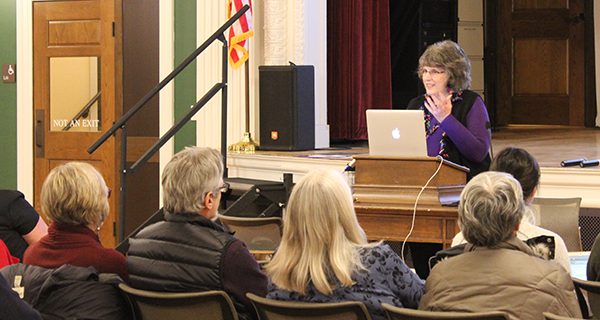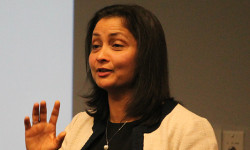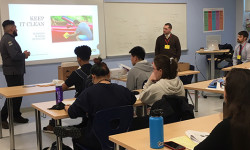[ccfic caption-text format="plaintext"]
By Laura Drinan
Hometown Weekly Reporter
Becoming a parent or guardian is a lifelong commitment to ensuring that a child is well cared for.
Among all the efforts in providing a child with everything he or she needs, however, parents may be incorporating things into their daily lives that could actually be negatively impacting their children without even realizing it.
In recent years, the news and how adults talk about it has been drilling fear and anxiety into children’s heads.
Sponsored by the Needham Human Rights Committee, Diane Levin, Professor of Early Childhood Education at Wheelock College, joined the community on February 5 to discuss how news media impacts young children’s thinking and ways for parents to address difficult news topics.
Today, children are swallowed up by negative news. It seems that information regarding politics, terrorism, sexual violence, riots and protests, and discontent around the globe is unavoidable.
Levin said that children’s awareness of violence begins at a young age and is usually introduced to them through television.
“They have a hard time knowing what is and what is not news,” she said. “Violent and scary content in news and entertainment media often are grouped together. So, when they see violence in cartoons, violence in drama, violence in media, that’s what they learn about violence, and when they hear something in the news, they bring what they learned from entertainment violence to that.”
Mixing reality and fiction leads to many misunderstandings and intensifies children’s fears.
Levin also suggests that children learn a lot about violence through toys, and she insists that movie and TV MPAA ratings are too lenient in the United States. She gives a specific example of the Spiderman franchise, whose movies are rated PG-13, which markets costumes and toys to toddlers.
It also becomes a challenge when the parents of a child’s friend does not set strict rules on what is and is not appropriate to watch, play with, or read. Many children also are exposed to inappropriate media by older siblings.
With her background in early childhood education and youth development, Levin has participated in and observed many kindergarten and elementary classrooms. She gave examples of children’s behaviors that she witnessed after 9/11, recalling that children were assembling tall structures out of cardboard building and taking turns as the plane to knock them over.
However, when the adults asked about their play, the children would not tell them they were reenacting a terrorist attack.
Levin recommends simply speaking to one’s child about issues they might hear about in the news or media.
“You don’t need to provide the full story,” she says. “Just tell children what they seem to want to know. Don’t worry about giving ‘right answers’ or if children have ideas that don’t agree with yours.”
She also warns parents to be aware of signs of depression, PTSD, anxiety, and stress in their children, which can include aggression or withdrawal, separation anxiety, difficulty sleeping, or difficulty with transitions.
While the overload of upsetting news and media has certainly had an impact on youths, Levin assures parents that they can keep their children safe and happy with open and honest conversations, and by clearing up misunderstandings.























